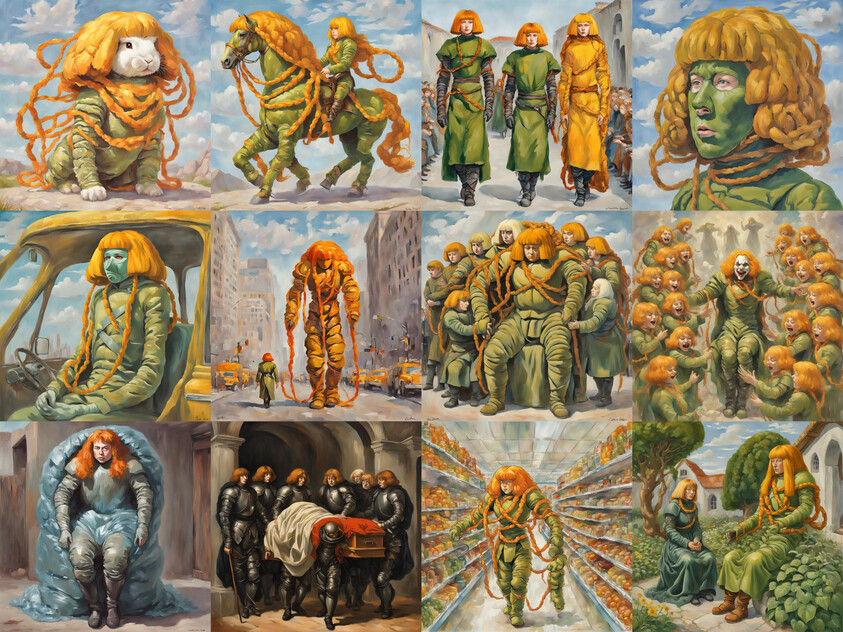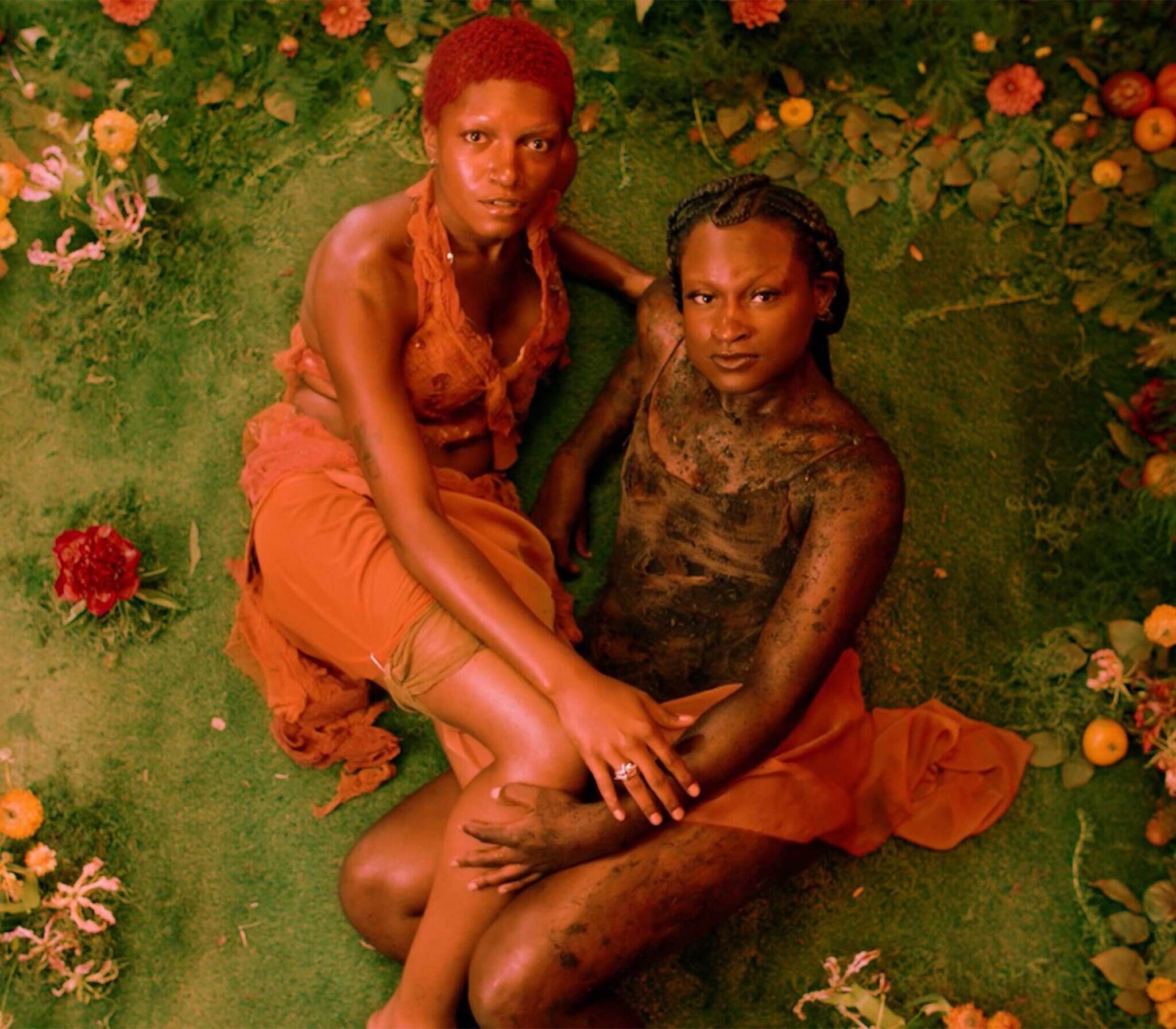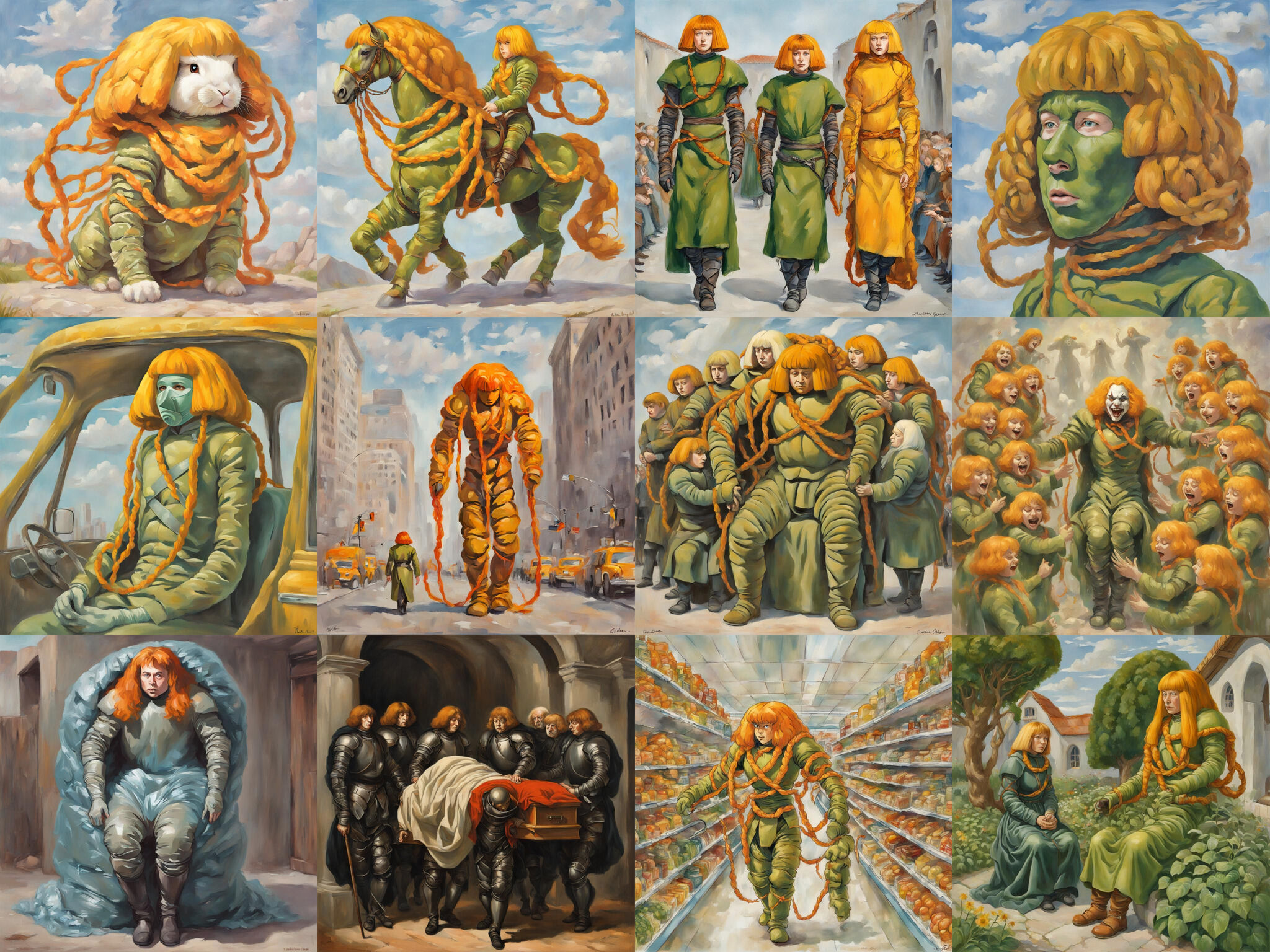Minisode: Biennial Artist Holly Herndon in Conversation with Whitney Youth Insights Leaders
Aug 13, 2024
0:00
Minisode: Biennial Artist Holly Herndon in Conversation with Whitney Youth Insights Leaders
0:00
Teen Narrator:
Welcome to a special minisode from the Whitney. I’m one of the Youth Insights Leaders, part of an after school program where we work with artists in the Museum’s exhibitions. For this year’s Biennial, we interviewed one of the artists in the show.
Holly Herndon:
My name is Holly Herndon and I'm an artist.
Teen Narrator:
We talked to Holly about her art, which she makes with her husband Mat Dryhurst.
Holly Herndon:
So we created this model that is hosted on artport that you all can play with.
Teen Narrator:
artport is the Whitney’s internet art portal. When you open Mat and Holly’s project up, you see a box to enter text. Below that, there’s a grid of AI-generated images. The pictures are mostly people and other creatures with long, ropey, orange braids and thick bangs. A lot of them are wearing puffy green suits. Most of them are female. They’re kind of like distorted versions of Holly. When you play around with their work in artport, you get more of these AI-generated images.
Teen Narrator:
Sometimes they’re a little off. Like we asked for a claymore, and it was just a regular sword. And the program didn’t seem to know what a Mega Chad is.
Holly Herndon:
I'm trying to change who I am in public AI models, what my embedding is in public AI models. An embedding of a bottle would have a bottleness—like an essence or a certain bottle-like quality that we kind of all as humans understand is the core essence of a bottle. And then to extrapolate from that, when you get to more abstract concepts, that gets more and more blurry and gray. And so we were able to actually do some reverse engineering and look at my embedding, and it really turns out that I'm kind of like this just blob of orange hair and bright blue eyes. These models are trained on the open internet. So any images of me that are tagged with my name, that's basically what creates the concept of me in these models. And the way that these systems work is I actually don't have any control over who I am. It's just this kind of aggregation of images that other people have uploaded. So I was kind of asking myself, "How much agency can I have in this system? What can I do with it to push back on this a little bit?"
So I made a costume with a giant haircut. So I basically just turned myself into my pastiche, just turned myself into my haircut. And then we made a model that people can navigate on the artport site. The data that goes into it is kind of ranked according to trustworthiness of the source because going back to the original idea of trying to find this objective truth, even though that's of course a very, very problematic thing to try to reach, but that's how these systems work. So anything that shows up on Whitney.org is going to have a higher ranking than something that's on my random blog spot somewhere. So then the next time that a model is created, we have to kind of wait and see, but we're thinking that my public embedding will be infected with this kind of character that we created.
Teen Narrator:
We asked Holly about what kinds of creativity she could express using AI.
Holly Herndon:
Every project that I've done with AI has been extremely manual. It's not just some automated process where it's type in a few words and art is done. It's usually very laborious, many decisions made. I think there's this perception that it's this fully automated thing, and it can be for some people, but for my practice it's really about getting into the bones of the model, understanding the training data, understanding the broader systems that the model is situated in.
Teen Narrator:
We also wondered what she thought about the future of using AI in art.
Holly Herndon:
I think that we're on this precipice of things dramatically changing because media will become kind of infinite and really easy to produce. I think it's going to change how we think about intellectual property, which is basically authorship because these systems are inherently collaborative. So you can collaborate with other people directly, but you can also collaborate with the entire human history, which is kind of a weird thing to wrap your head around.
So I think it asks us to question some of the things that we take for granted from a 20th-century approach to artmaking. I think it puts everything in question. I think that's really exciting. I think we're going to see artists using machine learning models as an art form. Whereas painting is a category, I see models as a category because they're these kinds of worlds that are infinitely navigable and generative that you can create a world and your audience can then create work through you or with you and kind of dive deep into your world in a really interactive way. And I think that that's very rich territory for artists.
That approach of humanizing these really technical systems has been there from the beginning of my practice, and I hope that it remains and I think that it remains. I think a lot of the things that we talk about with the work is a focus on the training data and a focus on how these systems aren't these alien intelligences, but they're just like aggregate human intelligence. It's actually a really remarkable human accomplishment, AI. I don't see it as this alien accomplishment. It's like us all together, and that's something to be celebrated if we can see the kind of humanity in it.
Teen Narrator:
Artists Among Us Minisodes are produced at the Whitney Museum of American Art. This episode was produced by teen Youth Insights Leaders: Hale, Kiyan, Jinhaohan, Gabryellah, Brigitte, and Sahara. Production support was provided by Whitney staff.
In this minisode, teens from the Whitney's Youth Insights Leaders program interview 2024 Biennial artist Holly Herndon. The conversation explores how the artist's identity and creative process are influenced by artificial intelligence (AI). They talk about the ethical use of AI, if AI can elicit an emotional response to art, and the evolution of the art world to include machine learning models as an art form. Visit the Whitney's portal to Internet and new media art, artport, to enter Holly Herndon and Mat Dryhurst: xhairymutantx, a project that focuses on training data behind AI models, opening new possibilities for its use.
Know a teen who might be interested in the Whitney’s programs? Learn more and apply now.



